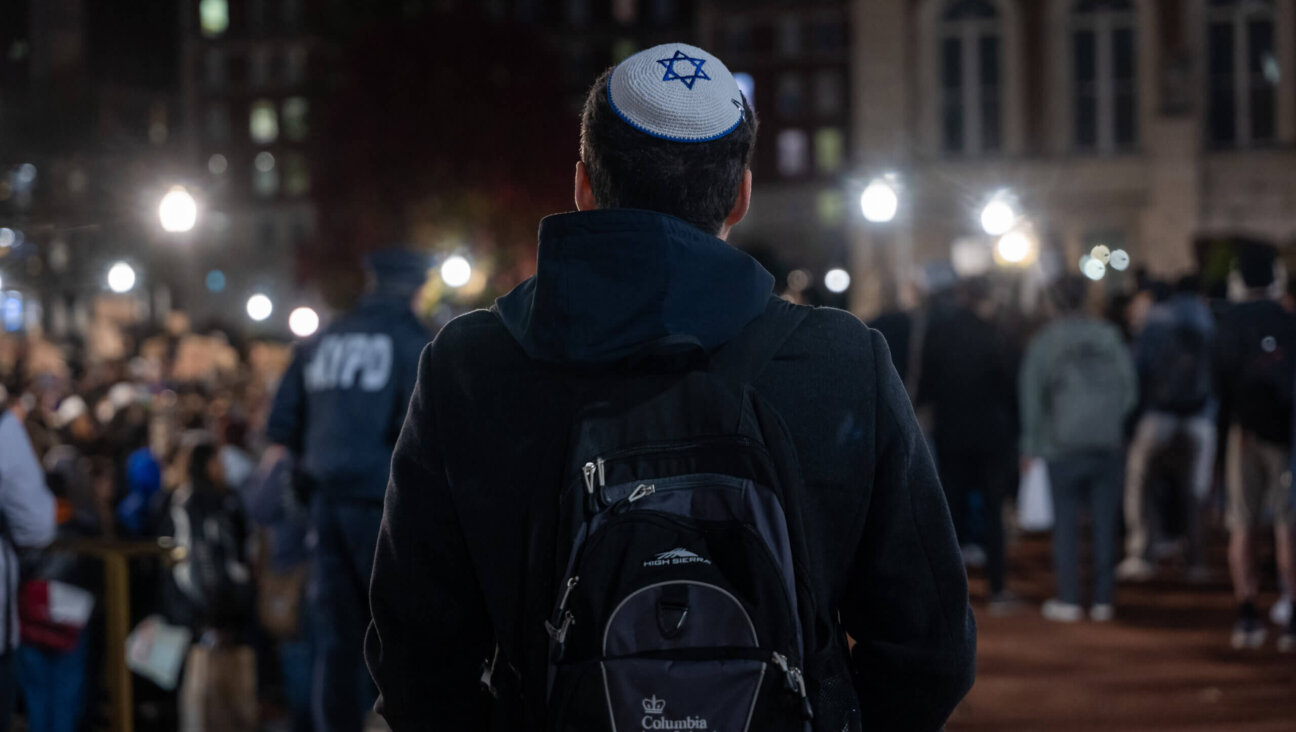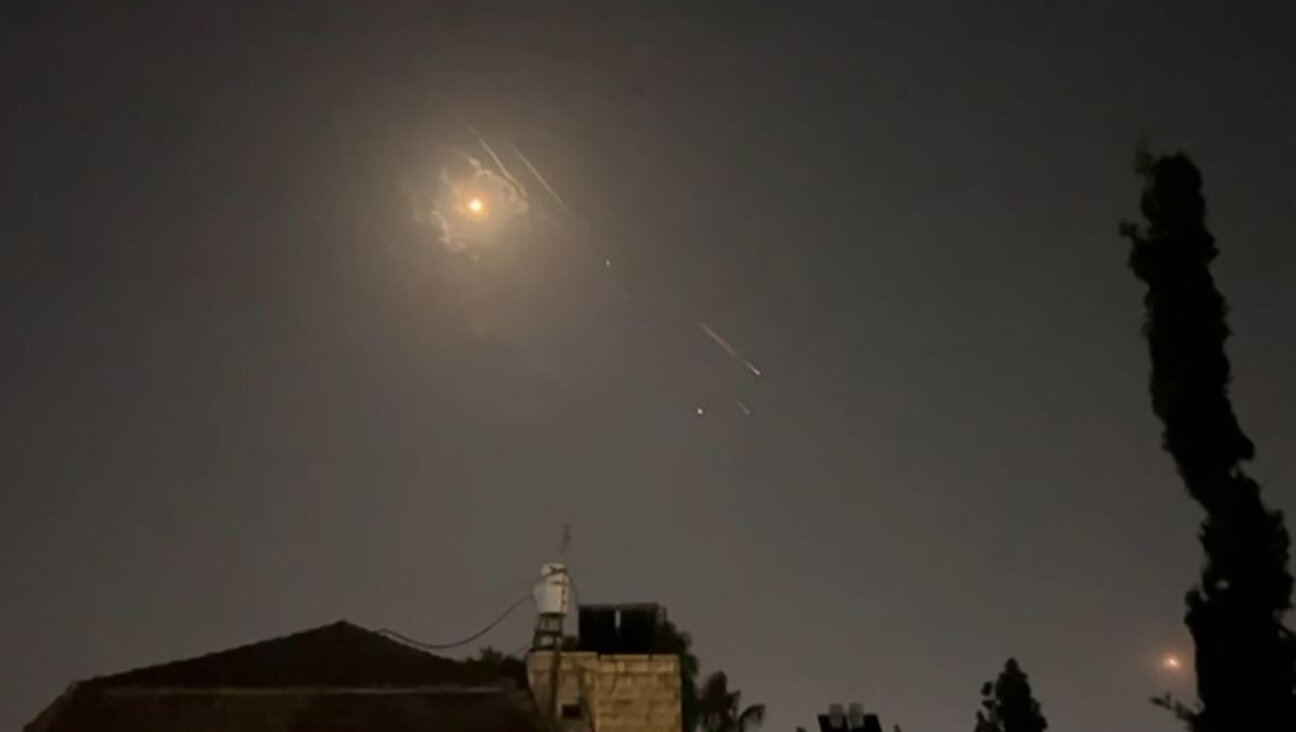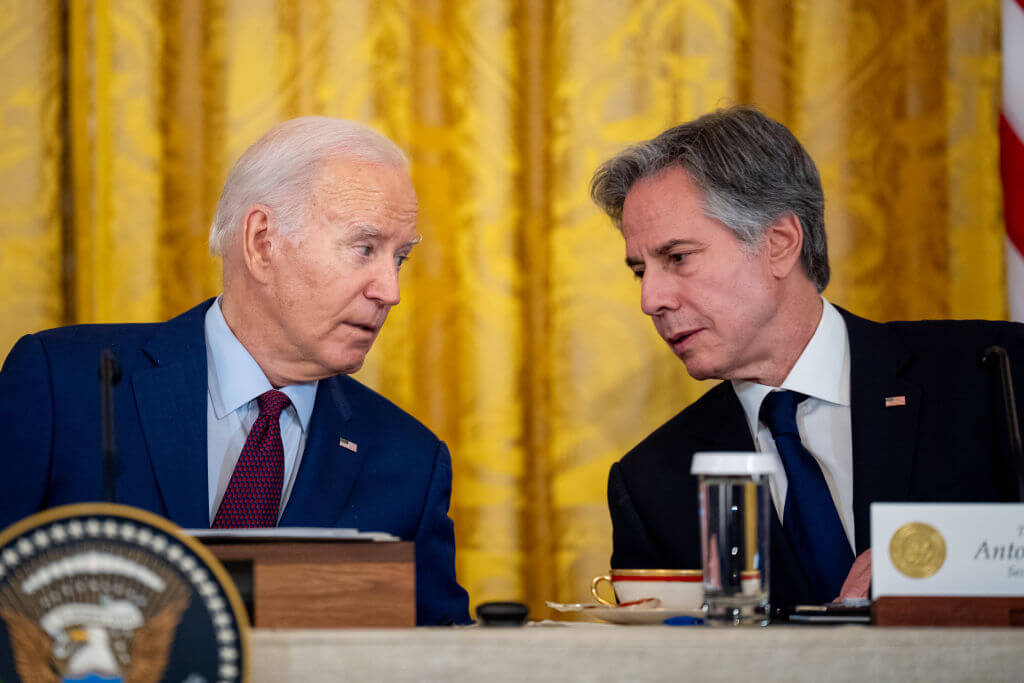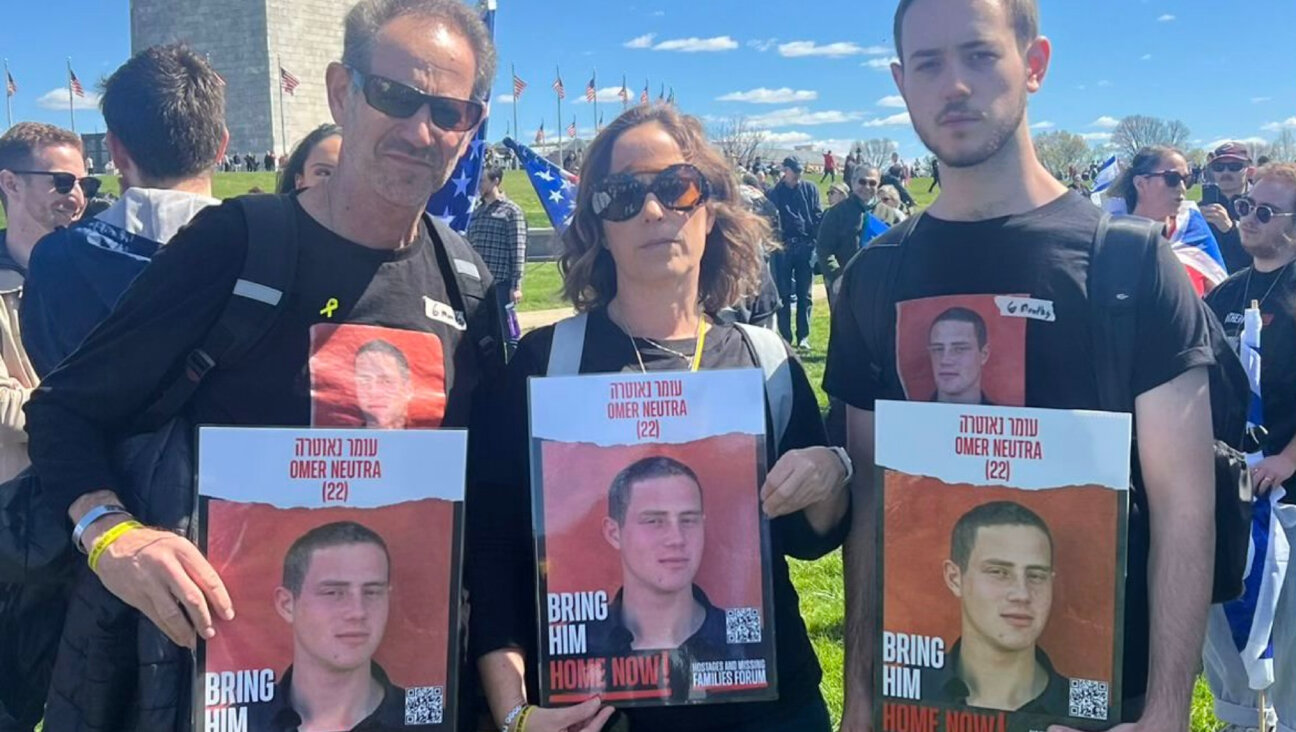Settlement Expands As Road Map Ends
KEDUMIM — A new neighborhood in this northern West Bank settlement was dedicated in a festive ceremony this week, in what Peace Now activists said was a deliberate display by the government to show that the road map is dead.
“They know exactly what is the meaning of this ceremony,” said Mossi Raz, a former Meretz Knesset member and a long-time Peace Now leader. “It is to say, ‘I don’t care about the road map — I violate the road map, and I show you that I violate the road map.’ I was very pessimistic about this government, but even I did not expect such a ceremony.”
According to the American-brokered road map peace plan that was signed in June, Israel was to freeze settlement-growth and evacuate unauthorized outposts while the Palestinian Authority was to crack down on terror.
Raz said the ceremony was the first such celebration under the government of Ariel Sharon, and the fact that it was conducted not for a new settlement but only for a new neighborhood within Kedumim was proof that it was done specifically for public show.
“This is not in spite of the road map; this is because of the road map,” said Raz, as he led some 100 demonstrators who were protesting 100 yards down the road, about a mile and a half west of Nablus. “If there is no road map, there is no ceremony because there is no need for a ceremony.”
Speaking at the festivities on behalf of the government, Construction and Housing Minister Effi Eitam said the building of the new neighborhood of Mitzpeh Yishai did not contradict any agreements.
“The road map is not a plan, but a document of concepts,” Eitam told 500 supporters attending the ceremony. “The main concept is that the Palestinians must bring terrorism to an end. That is not happening. Therefore all discussion on the road map is pointless.”
The Mitzpeh Yishai project is only one of a number of new building initiatives in the territories, including the Tourism Ministry’s recently announced plans for $2.8 million worth of projects. The Transportation Ministry has announced plans for the construction of a rail line from Kfar Saba to the West Bank town of Ariel, and Eitam’s ministry continues to push ahead with projects.
On this day, however, the Peace Now protestors were focused on Mitzpeh Yishai — and, for them, there was double frustration. Not only were they seeing the visible signs of new buildings — a row of gray cement house shells that are part of 70 units under construction, lying on a ridge below some of the 30 new units already in use — but they were forced to see them from afar.
The 100 protestors had come by bus, half from Jerusalem and half from Tel Aviv, with a police permit they thought would allow them to demonstrate right opposite the ceremony, but the army said otherwise. The hour-and-a-half ride from Jerusalem seemed like a cross between a summer camp outing and a tour bus: The riders, most of whom were over 50 years old, greeted and schmoozed with familiar faces they recognized from previous demonstrations, before a “guide” began describing the passing scenery.
Traveling due north through the heart of the West Bank, past the Jewish settlements of Ofra, Shilo, Eli, Kfar Tapuah and Ariel, and the Arab villages of Silwad, Ein Yabrud, Sawiya and Yasuf, Dror Etkes spoke over the microphone at the front of the bus telling everyone what to look for.
On the right, the barbed wire-topped fence running parallel to the road and surrounding Ofra — which he called the “mayflower of Israeli settlements” — was put up over the last year and runs across private Palestinian land, he said. “And on your left you can see one of the bypass roads, which is probably the most significant setting of facts on the ground affecting Israeli policy,” Etkes said. “If you look about 200 meters up, you’ll see one of the outposts that the Binyamin Regional Council is taking great effort to set up, on Route 60. Eight or nine families are living in this outpost, with a declared goal of creating a contiguous line of Jewish settlements.”
Etkes knows of what he speaks. As head of Peace Now’s settlement watch, his job is to document the daily expansion of settlements and outposts that are in violation of the road map, a job which makes him more knowledgeable about the settlements than all but a handful of government officials and settler leaders.
At the end of the day, while some of his fellow protestors expressed satisfaction with their efforts, Etkes was more despondent. “How do you measure success?” he asked. “Not a single settlement was dismantled, so I guess we were not successful.”

I hope you appreciated this article. Before you go, I’d like to ask you to please support the Forward’s award-winning journalism this Passover.
In this age of misinformation, our work is needed like never before. We report on the news that matters most to American Jews, driven by truth, not ideology.
At a time when newsrooms are closing or cutting back, the Forward has removed its paywall. That means for the first time in our 126-year history, Forward journalism is free to everyone, everywhere. With an ongoing war, rising antisemitism, and a flood of disinformation that may affect the upcoming election, we believe that free and open access to Jewish journalism is imperative.
Readers like you make it all possible. Right now, we’re in the middle of our Passover Pledge Drive and we need 500 people to step up and make a gift to sustain our trustworthy, independent journalism.
Make a gift of any size and become a Forward member today. You’ll support our mission to tell the American Jewish story fully and fairly.
— Rachel Fishman Feddersen, Publisher and CEO
Join our mission to tell the Jewish story fully and fairly.
Our Goal: 500 gifts during our Passover Pledge Drive!
























